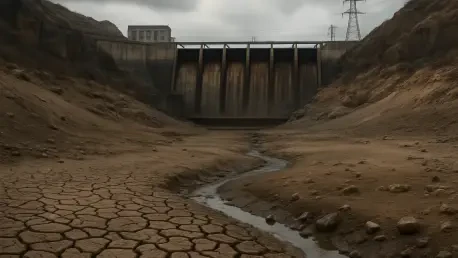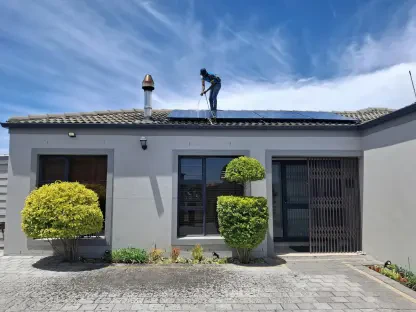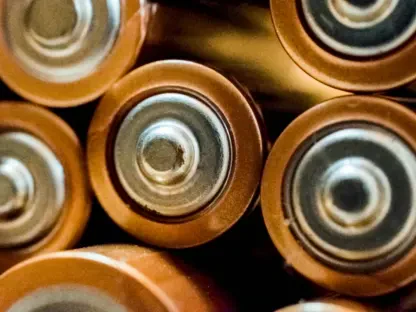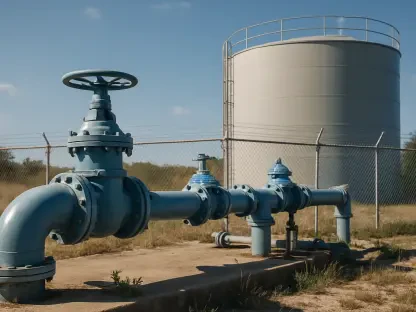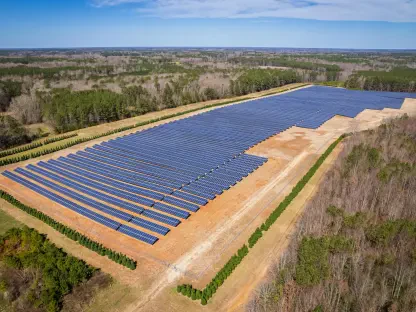Diving into the complex world of water and energy in the Colorado River basin, I’m thrilled to sit down with Christopher Hailstone, a seasoned expert in energy management, renewable energy, and electricity delivery. With his deep knowledge of grid reliability and security, Christopher offers a unique perspective on the challenges facing Arizona utilities as hydropower from iconic dams like Hoover and Glen Canyon diminishes due to shrinking reservoirs. In this conversation, we explore the declining output of these dams, the impact of low water levels on power generation, the uneven risks for small and large utilities, the region’s pivot to solar energy, and the critical role hydropower plays in grid stability. Join us as we unpack these pressing issues and look toward the future of energy in the Southwest.
How would you describe the current state of hydropower production from Colorado River dams like Hoover and Glen Canyon, and what’s driving the changes we’re seeing?
The situation with hydropower from these dams is pretty dire. Over the past couple of decades, we’ve seen a significant drop in output—Hoover Dam, for instance, is generating about half of what it did in 2000 when Lake Mead was full. The primary driver is the persistent drought and declining water levels in the reservoirs. Less water means less pressure to spin the turbines, and that directly translates to less electricity. It’s a stark reminder of how intertwined water and energy are in this region, especially as climate patterns continue to shift and reduce runoff.
Can you walk us through how falling water levels in Lakes Mead and Powell specifically impact the ability to generate power at these dams?
Absolutely. The physics is straightforward but brutal—higher water levels create more pressure to drive the turbines. When levels drop, as they have in Mead and Powell, that pressure decreases, and so does the power output. At Hoover, many of the older turbines weren’t designed for low water conditions, and there’s a risk of cavitation—where air bubbles form and damage the blades. If Mead falls to 1,035 feet or Powell to 3,490 feet, as projections suggest could happen in the next few years, we’re looking at a 70% cut in capacity at Hoover or a complete stop at Glen Canyon. That’s a catastrophic loss for the grid.
For smaller utilities that depend heavily on this hydropower, like those in rural areas, what kind of risks are they facing right now?
Small utilities are in a really tough spot. Many of them, like some in eastern Nevada, still rely on Hoover for a huge chunk of their power—up to 70% in some cases, though that’s down from 100% a couple of decades ago. When hydropower falls short, they’re forced to buy electricity on the open market, often at unpredictable and higher costs. With small customer bases, they don’t have the financial cushion to absorb those spikes, which can lead to rate hikes or surcharges for consumers. It’s a constant balancing act, and the uncertainty keeps them on edge every day.
On the flip side, how are larger or more diversified utilities coping with the loss of hydropower from these dams?
Larger utilities, or those with a more mixed energy portfolio, are generally in a better position. Take, for example, some tribal utilities in Arizona that only get about 12% of their power from federal hydropower. They’ve been able to lean on other sources, especially solar, which has grown rapidly in recent years. This diversification acts like a buffer—when hydropower dips, they’re not as exposed to market volatility or supply disruptions. It’s a smart strategy, treating their energy mix like a diversified investment portfolio to spread out the risk.
Speaking of solar, there’s a noticeable shift toward this renewable source in the region. Can you share how utilities are embracing solar to offset hydropower shortages?
Solar is becoming a lifeline for many utilities in the Southwest, where sunlight is abundant. Small utilities are partnering on projects like large-scale solar farms with battery storage, set to come online soon, while others are building their own smaller arrays with federal support. Larger utilities have ramped up solar to account for significant portions of their supply—some jumping from near zero to 30% in just a few years. Projects range from sprawling facilities to innovative setups like solar panels over canals. Despite some policy pushback on renewables, the momentum is strong, and these initiatives are helping reduce reliance on volatile market purchases.
What is it about hydropower that makes it so crucial to the electrical grid, even if it’s just a small slice of the overall energy mix?
Hydropower’s value goes way beyond raw megawatts. It’s incredibly flexible—dams like Hoover and Glen Canyon can ramp up or down in minutes to meet sudden changes in demand, like during early evening peaks when solar drops off and people are cranking up appliances at home. Most utility-scale batteries only store power for a few hours, so hydropower acts as a critical bridge. If we lose that capacity, especially from a major dam like Glen Canyon, grid reliability takes a hit, and utilities might have to lean on less flexible or dirtier sources like fossil fuels to fill the gap. It’s a stabilizing force we can’t easily replace.
Looking ahead, what’s your forecast for the future of energy in the Colorado River basin given these ongoing challenges with hydropower?
I think we’re at a turning point. The reality of diminishing hydropower isn’t going away anytime soon—reservoirs are unlikely to rebound to historic levels with the current climate trends. Utilities will need to keep diversifying, doubling down on renewables like solar and wind while investing in storage tech to mimic hydropower’s flexibility. Grid modernization and regional cooperation will be key to balancing supply and demand. But there’s also a wildcard: policy and funding. If federal support for things like turbine upgrades or renewable projects wavers, the transition could be rockier. My hope is that the urgency of the situation drives innovation and collaboration, but it’s going to be a bumpy road for the next decade at least.
